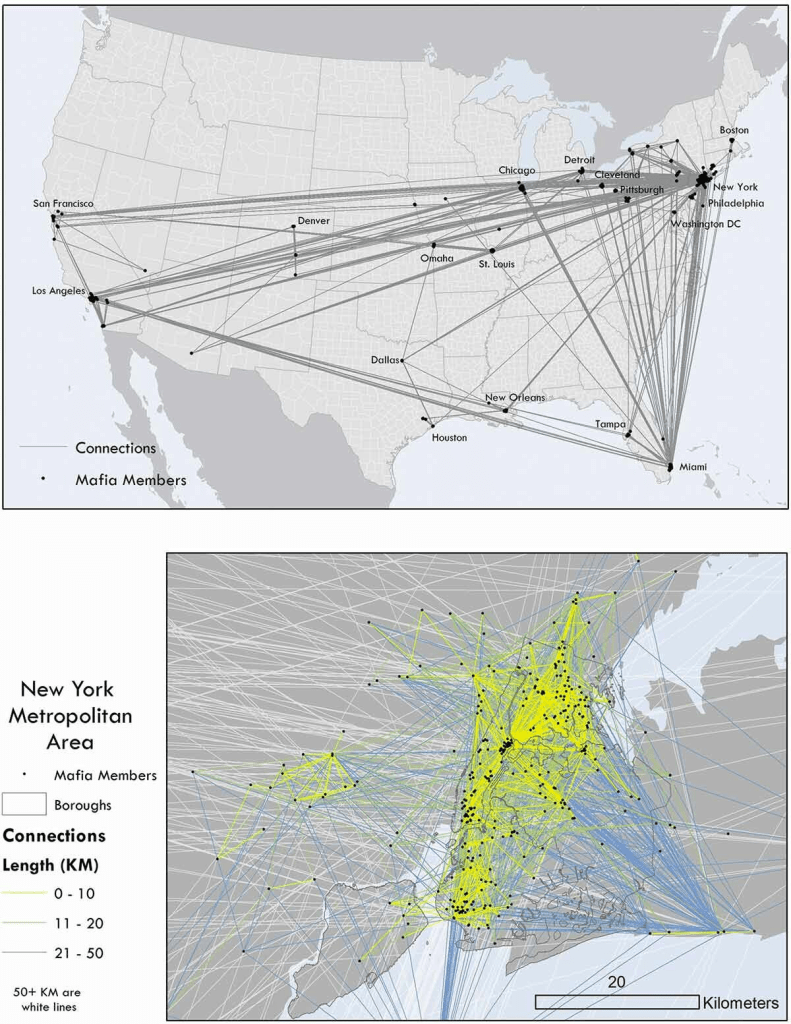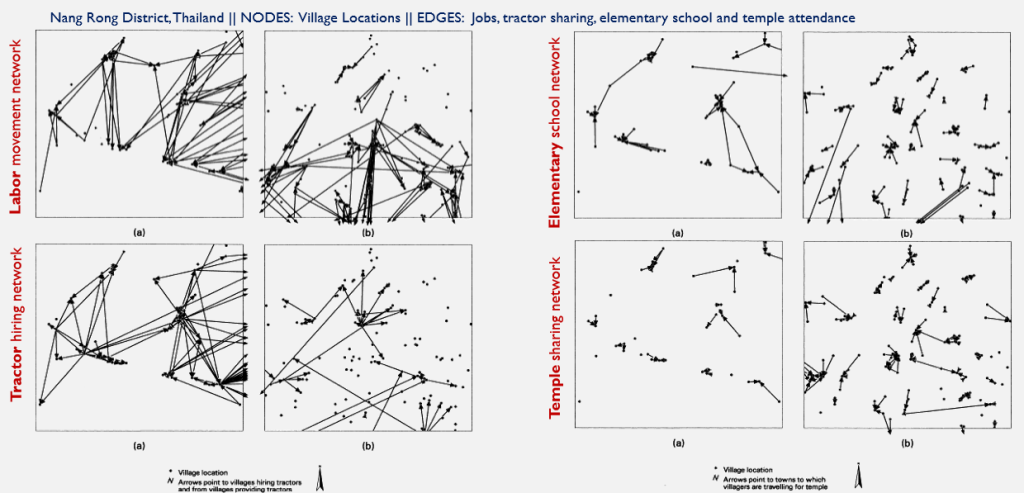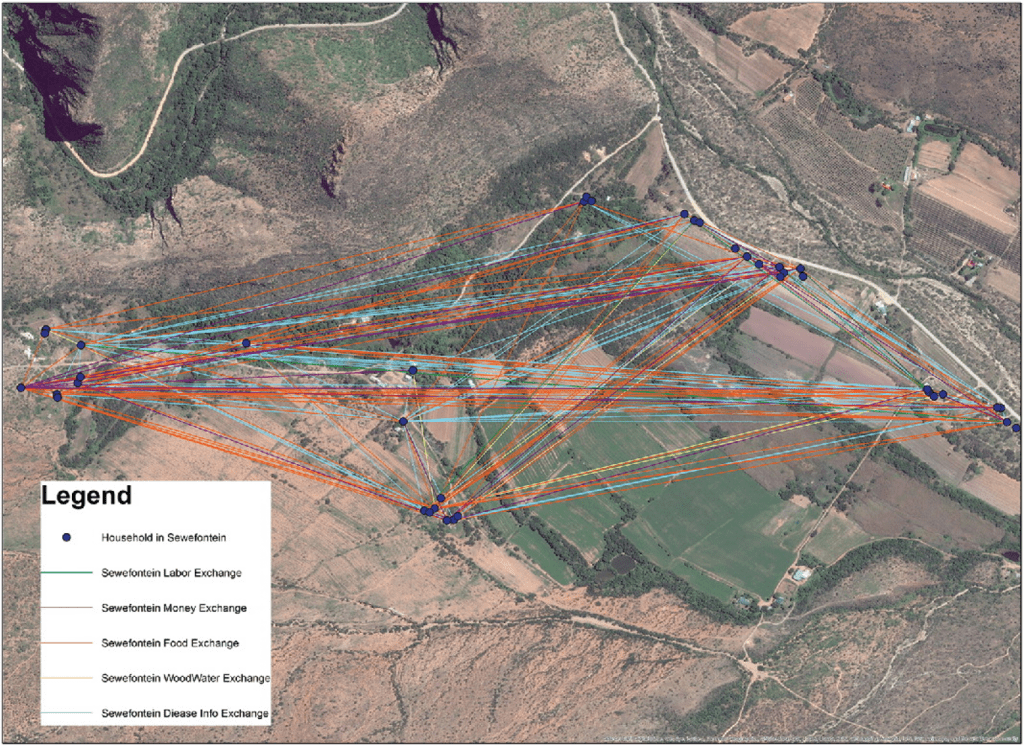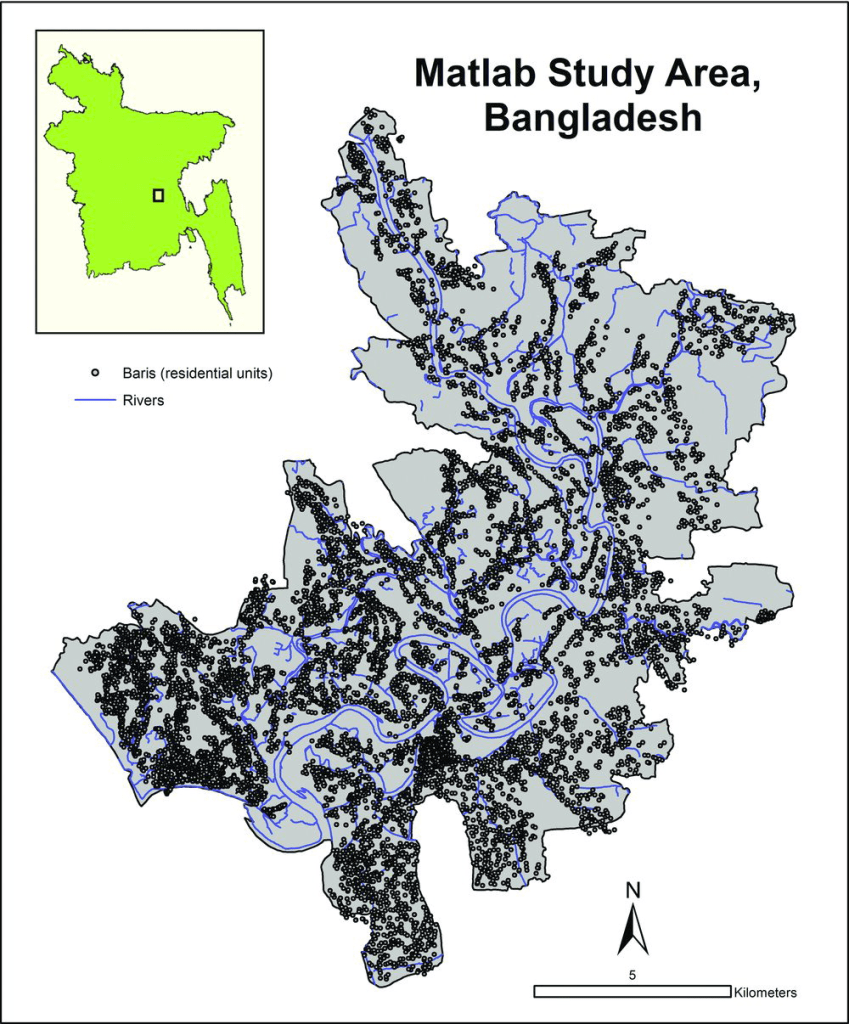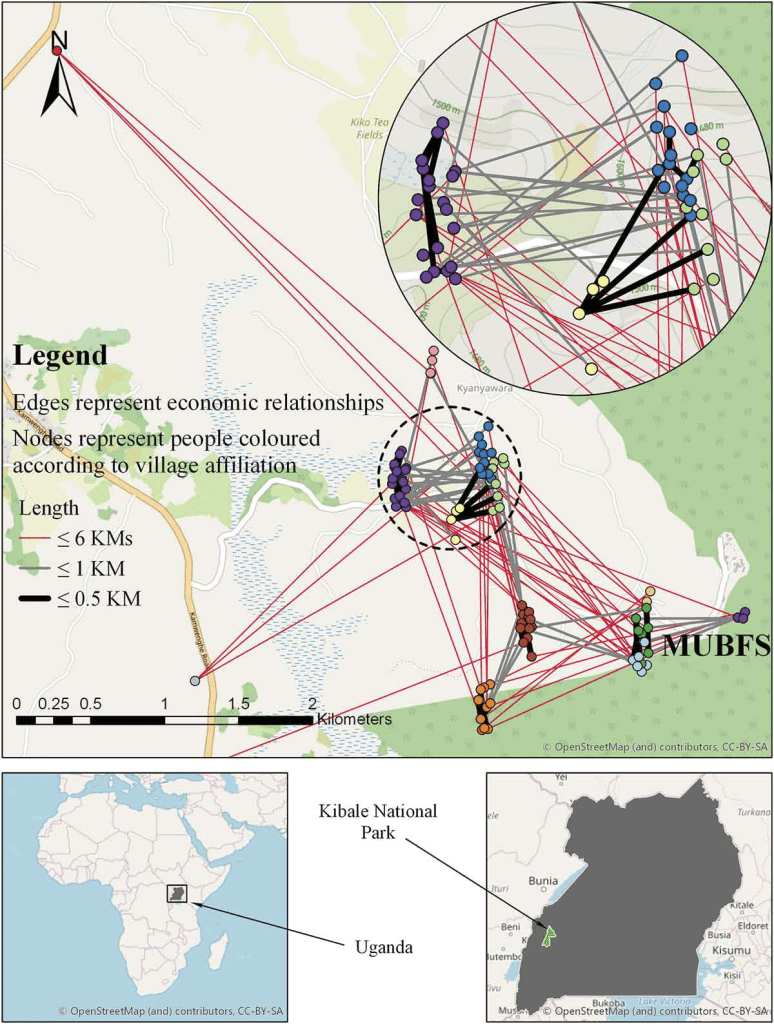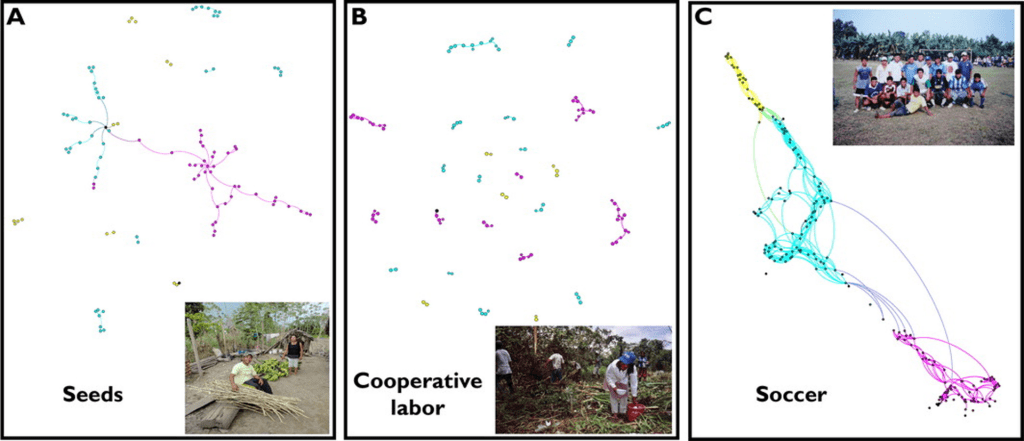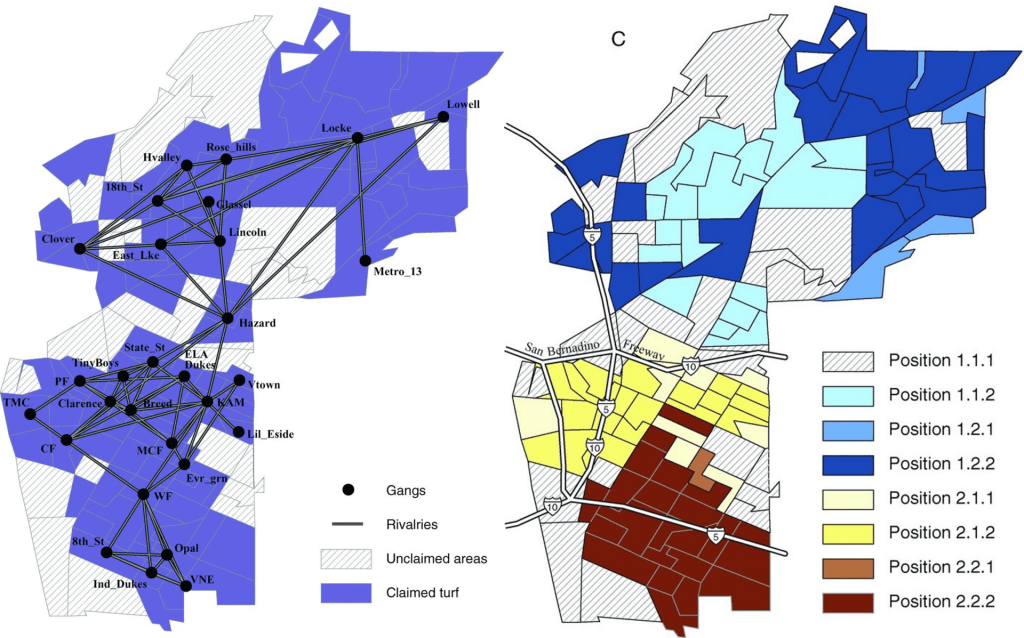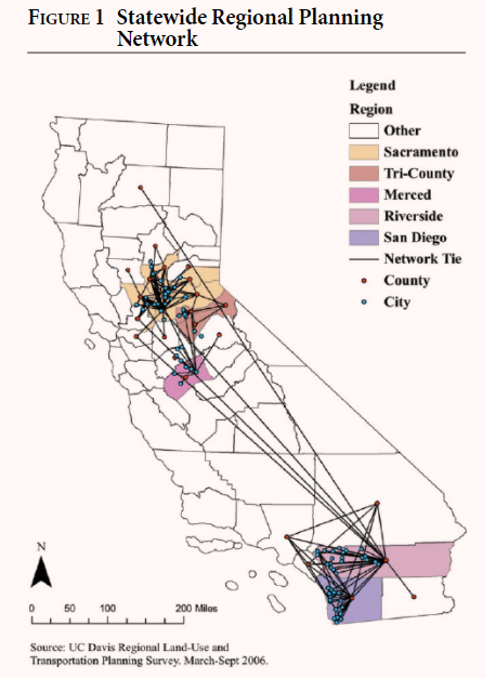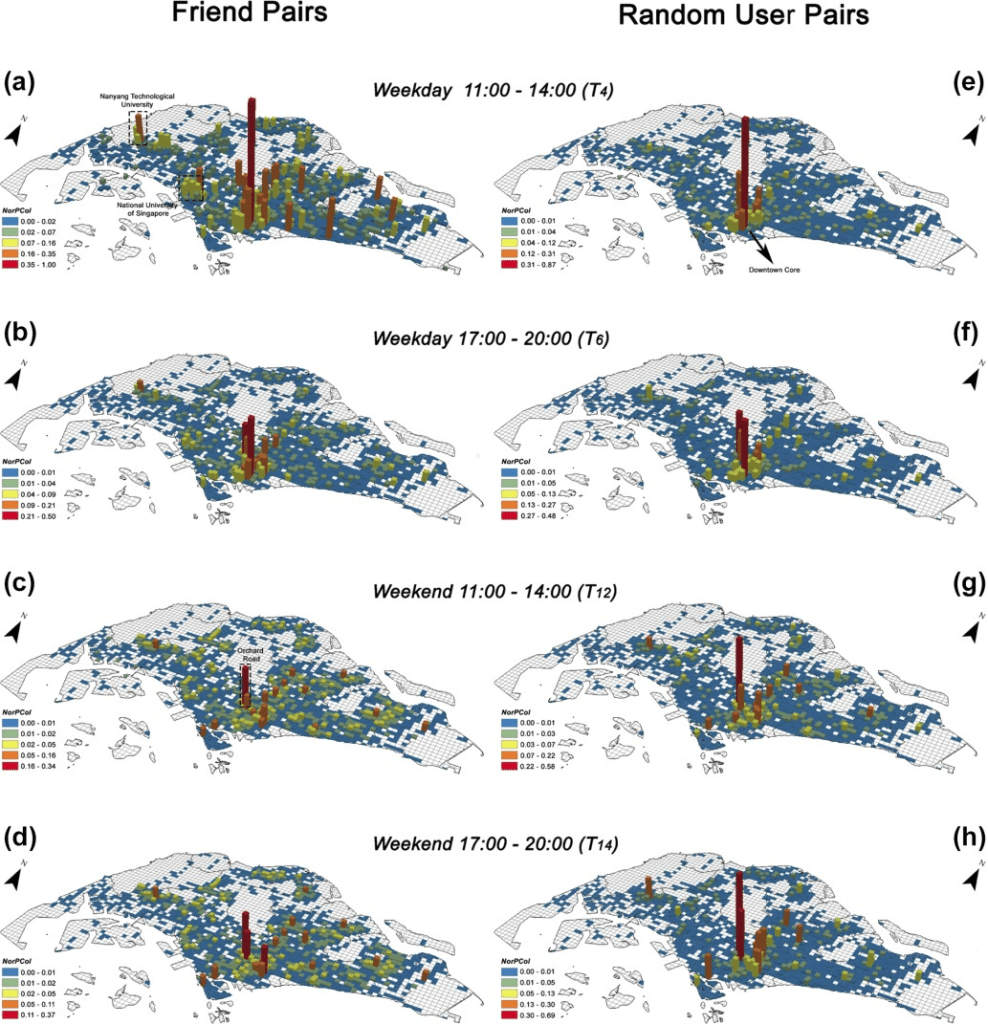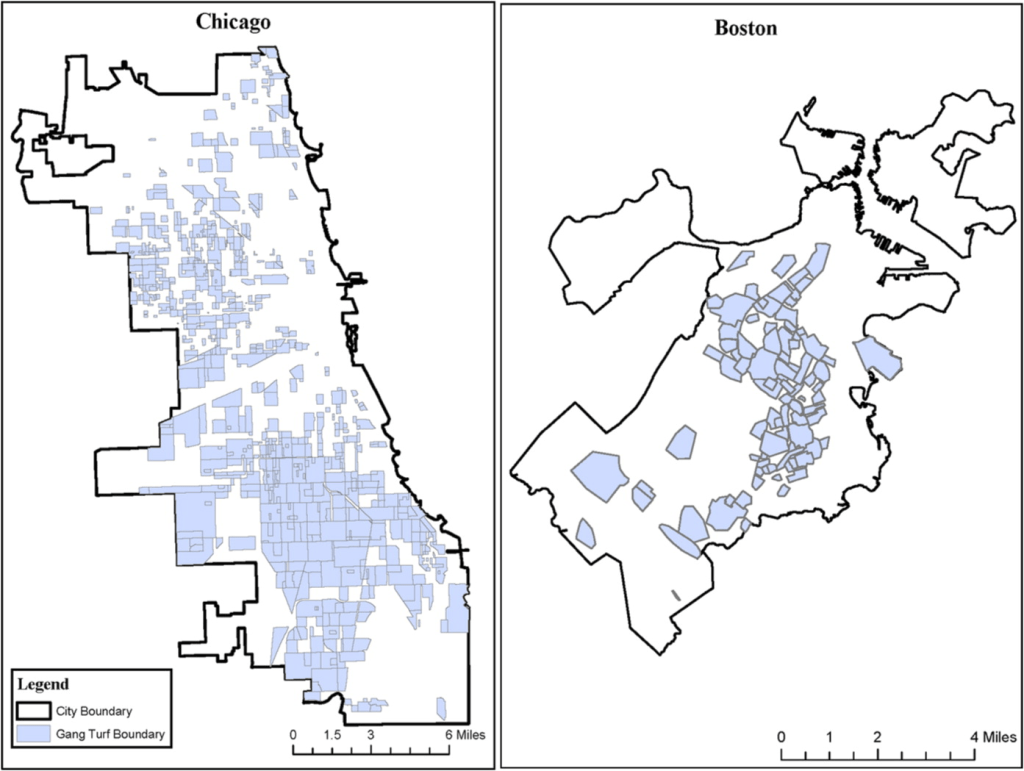A Spatial Social Network (SSN) is a type of network where nodes and edges have a defined geographic location (i.e., they are geolocated) and edges specify relationships between individuals or organizations.
Edges in a spatial social network may represent personal or organizational relationships between family members, business partners, members of the same interest group, local governments, etc. Although networks of international imports and exports or where people travel for vacation are spatial networks, they are not consider spatial social networks because they don’t represent personal or organizational relationships.
In a spatial social network, distance between nodes can be measured as network distance or geographic distance.

A geolocated social network of households in the Amazon where edges represent hosting one another at the home (courtesy of Paul Hooper) is divided into three modules. The households are then mapped atop a spatial image of the study area to show that nearer households tend to be in the same modules (from Andris, 2016).
Further Reading:
In this entry from the Geographic Information Science & Technology Body of Knowledge, Andris (2019) introduces the concept of a social network (SN), describes their spatial properties, and explains how to embed them into GIS.
In this chapter from the Handbook of Spatial Analysis in the Social Science, Andris & Sarkar provide further explanation of SSNs and their applications in research.
In this journal article in Computational Urban Science, Wu et al. (2022) conducted a bibliometric analysis to gain insights into the research landscape of spatial social network analysis.
In this entry from the Encyclopedia of Social Network Analysis and Mining, Gunturi et al. (2017) model spatiotemporal networks, which are described as network representation of social relations among actors who are oriented in geographical locations over time.
In this conference paper from the Annual International Conference on Geographic Information Science, Sarkar et al. (2017) discuss the challenges and possibilities of combining of spatial and social network concepts.
SSN Visualizations:
Take a look at these visualizations of Spatial Social Networks! Click on the images below to view each paper and learn more.

Social network analysis of nonprofits in disaster response: the case of Twitter during the COVID-19 pandemic in the United States
Gong, X., Peng, S., Lu, Y., Wang, S., Huang, X., and Ye, X. 2022. Social Science Computer Review, 0(0).

